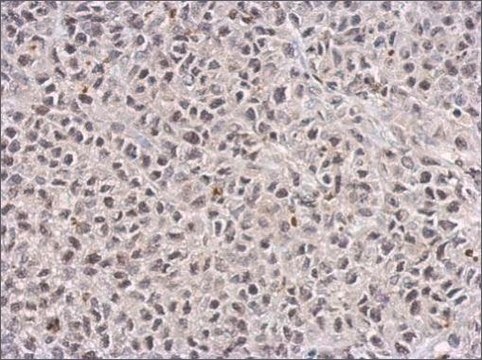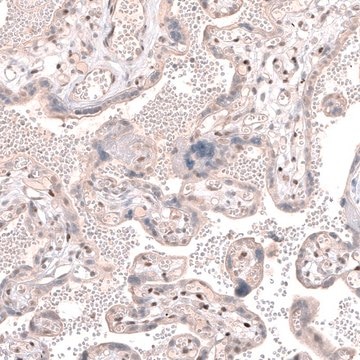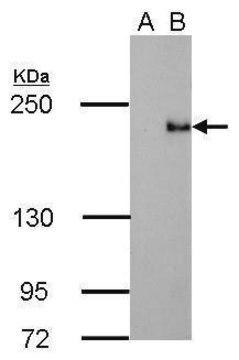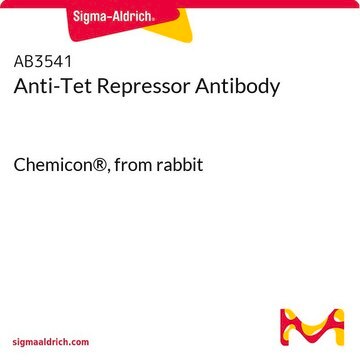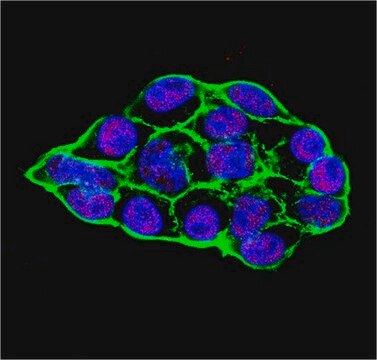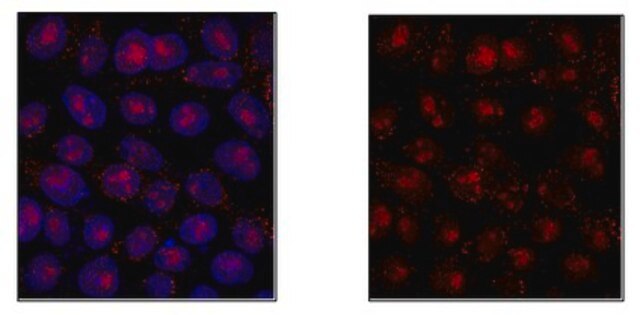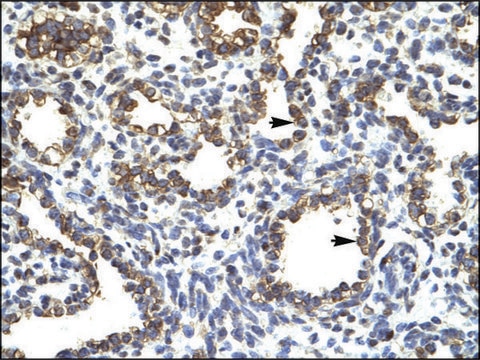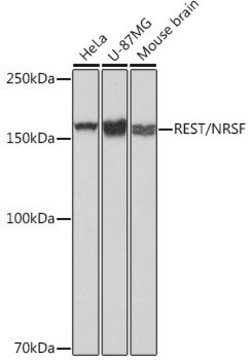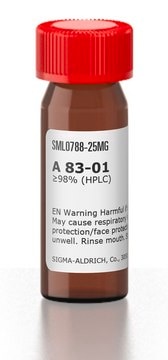ABS463
Anti-TET3 Antibody
from rabbit, purified by affinity chromatography
Synonym(s):
Ten-eleven-translocation family 3
Sign Into View Organizational & Contract Pricing
All Photos(1)
About This Item
UNSPSC Code:
12352203
eCl@ss:
32160702
NACRES:
NA.41
Recommended Products
biological source
rabbit
Quality Level
antibody form
affinity isolated antibody
antibody product type
primary antibodies
clone
polyclonal
purified by
affinity chromatography
species reactivity
human
technique(s)
western blot: suitable
UniProt accession no.
shipped in
wet ice
target post-translational modification
unmodified
Gene Information
human ... TET3(200424)
General description
Methylcytosine dioxygenase TET3 (TET3) is a methylcytosine dioxygenase that catalyzes the conversion of methylcytosine to 5-hydroxymethylcytosine. TET3 is involved in the demethylation of zygotic DNA before the first mitosis and has been suggested to be involved in the epigenetic reprogramming of the zygotic paternal DNA following natural fertilization. TET3 is expressed in colon, muscle, adrenal gland, and peripheral blood lymphocytes. It is also expressed in fetal brain but not adult brain.
Immunogen
KLH-conjugated linear peptide corresponding to human TET3.
Application
Anti-TET3 Antibody is a highly specific rabbit polyclonal antibody, that targets Methylcytosine dioxygenase TET3 & has been tested in western blotting.
Research Category
Signaling
Signaling
Research Sub Category
Developmental Signaling
Developmental Signaling
Quality
Evaluated by Western Blotting/Peptide Inhibition Assay in SK-N-SH cell lysate.
Western Blotting/Peptide Inhibition Assay Analysis: 1 µg/mL of this antibody detected TET3 in 15 µg of SK-N-SH cell lysate.
Western Blotting/Peptide Inhibition Assay Analysis: 1 µg/mL of this antibody detected TET3 in 15 µg of SK-N-SH cell lysate.
Target description
~200 kDa observed. Uncharacterized bands may appear in some lysate(s). Uniprot describes 3 isoforms at ~77 kDa, ~167 kDa, and ~180 kDa
Physical form
Antigen Affinity Purified
Purified rabbit polyclonal in buffer containing PBS with up to 0.1% sodium azide.
Storage and Stability
Stable for 1 year at 2-8°C from date of receipt.
Analysis Note
Control
SK-N-SH cell lysate
SK-N-SH cell lysate
Other Notes
Concentration: Please refer to the Certificate of Analysis for the lot-specific concentration.
Disclaimer
Unless otherwise stated in our catalog or other company documentation accompanying the product(s), our products are intended for research use only and are not to be used for any other purpose, which includes but is not limited to, unauthorized commercial uses, in vitro diagnostic uses, ex vivo or in vivo therapeutic uses or any type of consumption or application to humans or animals.
Not finding the right product?
Try our Product Selector Tool.
wgk_germany
WGK 2
flash_point_f
Not applicable
flash_point_c
Not applicable
Certificates of Analysis (COA)
Search for Certificates of Analysis (COA) by entering the products Lot/Batch Number. Lot and Batch Numbers can be found on a product’s label following the words ‘Lot’ or ‘Batch’.
Already Own This Product?
Find documentation for the products that you have recently purchased in the Document Library.
Aixia Liu et al.
iScience, 24(9), 103065-103065 (2021-09-28)
A conceptual framework for understanding abnormal endometrial decidualization, with considerable significance for the diagnosis and treatment of abnormal decidualization-related changes in non-receptive endometrium in implantation failure during early pregnancy is very important. Here, we found the expression levels of miR-29a
An-Ping Lin et al.
Leukemia, 36(4), 1150-1159 (2022-01-09)
Mitochondria can function as signaling organelles, and part of this output leads to epigenetic remodeling. The full extent of this far-reaching interplay remains undefined. Here, we show that MYC transcriptionally activates IDH2 and increases alpha-ketoglutarate (αKG) levels. This regulatory step
ZhiJun Qiu et al.
Cell chemical biology, 27(5), 538-550 (2020-02-27)
Mitochondrial D2HGDH and L2HGDH catalyze the oxidation of D-2-HG and L-2-HG, respectively, into αKG. This contributes to cellular homeostasis in part by modulating the activity of αKG-dependent dioxygenases. Signals that control the expression/activity of D2HGDH/L2HGDH are presumed to broadly influence
Our team of scientists has experience in all areas of research including Life Science, Material Science, Chemical Synthesis, Chromatography, Analytical and many others.
Contact Technical Service
